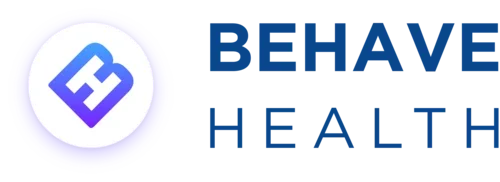The healthcare staffing shortage, and the behavioral health staffing shortage in particular, does not appear to be easing up any time soon.
It’s easy to find headlines screaming that we’ve reached a new crisis stage in the addiction treatment staffing crisis.
There’s many drivers behind the hiring difficulties addiction treatment organizations are facing across the country. Lack of training and education in addiction medicine, low job satisfaction, high provider stress, high clinician burnout rates and inefficient workflows are among the myriad challenges providers cite in the behavioral health field.
Today, we’ll consider what’s behind the behavioral health staffing shortage, when it’s likely to improve and what steps you can take today to safeguard your organization from understaffing.
The Staff Shortage in Addiction Treatment is Very Real
It’s estimated that we need roughly 80,000+ more behavioral health providers of many different scopes to adequately meet demand for addiction services in the United States. As the opioid crisis continues and broadens to incorporate a synthetic opioid crisis, providers are saddled with large caseloads filled with very high-needs patients. As more and more positions go unfilled, pressure on already short-staffed organizations mounts, causing a negative feedback loop and amplifying existing issues for providers. Now, with hiring committees grasping at straws, providers are demanding increased flexibility and better pay, as well as smaller caseloads. Because of the staffing crisis, some behavioral health professionals are negotiating packages that were unheard of in the community 5 years ago.
Equity and representation in healthcare have also suffered under the staffing crisis, especially in the behavioral health field, where underserved communities see higher-than-expected rates of substance use disorders and mental health issues. If it’s been difficult to hire a behavioral health provider - period - try hiring a clinician who can provide culturally responsive care to BIPOC patients. BIPOC patients make up over 13% of the general population but less than 6% of healthcare providers!
What Suggestions Have Experts Made for Ending the Behavioral Health Staffing Crisis?
There’s quite a few opinions on what needs to be done to address the staffing crisis.
The most often cited solutions are:
Increasing the number of providers by boosting education enrollment in healthcare, PCP, behavioral health and mental health training programs
Incentivize provider placements in rural areas and densely urban locations, where it’s been more difficult to hire and retain workers
Provide flexibility in terms of work-from-home days, family-friendly schedules and other arrangements to improve provider work-life balance
Hire and retain more staff to allow for smaller, more manageable caseloads in the behavioral health community
Train and empower providers to “operate at the top of their scope” with state regulations that allow providers to implement the full range of the services they’re trained to deliver
Ensure that your mission and policies align with the diversity and equity goals of Millenials and Gen Z, as cultural fit is typically an important consideration for workers of this age
Create smarter, more efficient workflows for providers at every level of care in your organization to improve clinician satisfaction, reduce burnout and maximize patient-centered, patient-facing interaction
Dispense with common staff frustrations like the fax machine, the unwieldy paper charts, color coded filing systems, and the ancient EHR that never worked in the first place. Eliminate as many tedious, low value tasks for your staff as possible and adopt a software system that is designed to take addiction treatment into the future.
How Can a Smart Addiction Treatment EMR or Behavioral Health EHR Combat the Staffing Crisis?
The software you use to wrangle all aspects of your organization - whether that’s clinical, RCM, CRM, medical, housing, admissions, or HR - can make or break your staff’s experience.
Here’s our recommendations for staffing crisis responsive EHRs for behavioral health organizations:
Avoid generic software and piecemeal solutions that only lead to frustration. Be sure you’re using an all-in-one system like Behave Health with an intuitive design that can handle the unique workflows of addiction treatment.
Offer clinicians the option to use speech-to-text automatic transcription of SOAP notes, treatment plans and other EMR entries to minimize time spent “doing notes.”
Eliminate the hassle of completing new admit paperwork packets and instead let patients complete their intake packet on the device of your choice, anytime, anywhere.
Go cloud-based. Cloud-based addiction treatment EMR software makes it easy to access and share patient data, allowing for more flexible schedules, more adaptable workflows and greater work-from-home opportunities for staff.
Choose an EMR that’s ChatGPT compliant, allowing providers to quickly leverage natural language processing as they complete their documentation and other word processing tasks.
Behave Health: Tech for the Future of Addiction Treatment
Behave Health is committed to making it easier - and more profitable - to operate evidence-based, results-focused addiction treatment centers today and well into the future.
Get your free trial started today and see why more addiction treatment centers prefer Behave Health.
PS. Just getting started with behavioral health? Need help with certification, too? Behave Health can also help direct you to the right resources for help with licensing or accreditation by either The Joint Commission or CARF. Mention to your product specialist that you’re interested in this service after you start your free trial!




